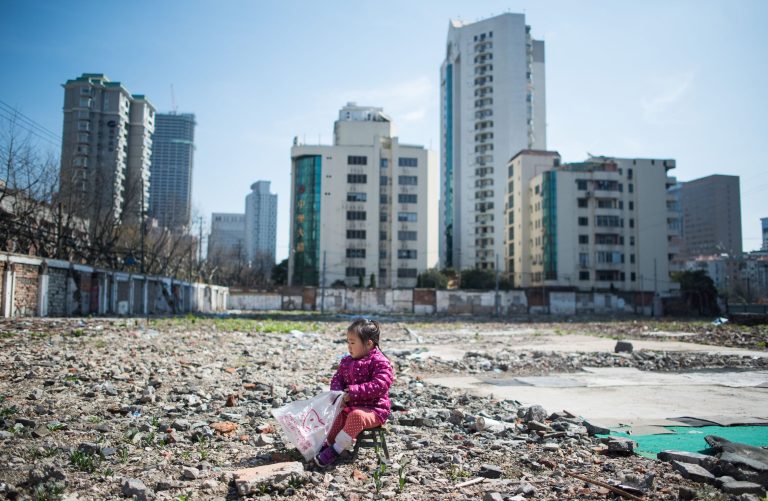On Feb. 15, the State Council Information Office held a press conference to share the results of the first national comprehensive risk census of natural disasters.
The purpose of the census was to gather information on various disaster-causing factors, disaster-affected bodies, data on disaster reduction capabilities, data of annual disaster since 1978 and major disasters since 1949, and data on key disaster hazards, according to an official with the Office.
Nearly 5 million personnel were mobilized to conduct the census over the past three years, while data was collected on 660 million residential buildings throughout the rural and urban areas of China.
On Feb. 23, the phrase “official disclosed that there are 600 million houses in the country” became a top search topic and sparked heated debate on the Chinese internet.
The same day, an article by mainland magazine China Newsweek, “The First Wave of Kindergarten Closures Have Arrived, Kindergartens Say ‘It’s Hard to Find Even One Child’”, became a trending topic on Weibo.
Success
You are now signed up for our newsletter
Success
Check your email to complete sign up
The article noted that the number of newborns in China had been declining by 1 to 2 million each year since 2017, resulting in a shortage of enrollments in kindergartens.
An investigation by reporters in Beijing found that most private kindergartens and a small number of public kindergartens had a surplus of places from 2021 and 2022. This is compared with some years back when public kindergartens barely had any places.

Yicai, another Chinese media outlet, reported that a kindergarten run by a state-owned enterprise in Wuhan had previously only accepted the children of employees from the enterprise. However, since autumn some of its classes were not fully enrolled — something quite rare given that parents used to have to wait in queue for a place. The kindergarten began accepting children from parents not working at the enterprise.
Many observers pointed to the latest data and reports as effects of China’s downward demographic spiral, brought by decades of the erroneous and brutal one-child policy.
Despite the policy being relaxed to allow two, then three children per married couple, it still ended up with the prevention of 400 million births, and by the time it was amended, many young Chinese were opting not to have children.
Making sense of the numbers
According to mainland media reports, a census by the PRC’s housing construction system involved 660 million urban and rural housing buildings across the country. Rural houses accounted for more than 90 percent of those buildings and half of the total building area. Meanwhile, there are over 47 million urban buildings (including residential and non-residential).
Meanwhile, according to the People’s Republic of China (PRC) National Bureau of Statistics statistical bulletin on national and social development for 2022, there were 733.51 million people employed at the end of that year.
Of that number 459.31 million (62.6 percent) of China’s employed population were in urban areas, a drop of 8.4 million from a year ago and the first decline since 1962.
The Chinese Communist Party is trying to revive a rapidly deteriorating Chinese economy that was further worsened by three years of “zero-COVID” lockdown policies, and save the real estate sector, and turn around China’s population decline.
However, the publicly released figures paint a poor picture of Beijing’s prospects for a significant recovery.

“Population growth is an important economic growth driver. This is even more so for the PRC where property sales and manufacturing are key pillars of economic growth,” a March 2 newsletter by risk consultancy SinoInsider reads.
Though Chinese leader Xi Jinping took relatively quick action in 2016 to scrap the one-child policy that had been in place since 1979, such measures have not been able to resuscitate China’s once-famed population growth.
In 2022, China recorded 6.77 births per thousand people, lower than the 7.52 per thousand in 2021 and 8.52 in 2020; the birth rate was still above 10 per thousand people in 2019, SinoInsider noted.
Looking at the unprecedented phenomenon of kindergarten vacancies, the analysts described it as “an early sign of China’s demographic crisis becoming more obvious.”
“Enrollment woes at kindergartens today will impact the education sector in a couple of years. Two decades later, China could start to see serious labor shortages in the manufacturing sector and waves of business closures. Meanwhile, property developers will see chronic oversupply problems, struggle even more to pay off debts, and fold in greater numbers as the real estate industry comes to terms with population decline.”
Meanwhile the 660 million buildings, both residential and non-residential, standing throughout China point to severe overcapacity in the real estate market.
According to SinoInsider, the massive interest in the figure resulted from Chinese fearing what the huge housing overcapacity could mean for their own real estate investments.
Calculations run by the New York-based consultancy, which focuses on Chinese elite politics and economics, indicate that in urban areas alone, China has enough housing to accommodate 1.478 billion people, or more than the entire officially recognized population (demographers have estimated that the real number of Chinese could be around 1.2 billion).
The official number of Chinese permanent urban residents in 2022 was 920 million.
“Local governments will encounter even more fiscal shortfalls and see their debt crisis triggered as they have fewer people and businesses to tax and property developers cut down on land purchases. With less money, local governments will struggle to sustain grassroots operations,” SinoInsider wrote.
Less revenue will not only mean a poorer China but also impact the Communist Party’s ability to pay the personnel needed to “maintain stability” — that is, suppress protests and other forms of dissent.
“As the CCP’s political legitimacy erodes, regime collapse becomes a matter of when, not if,” the analysis said.
SinoInsider added that given the bleak data, the likelihood of Beijing being able to follow through on its loudly announced goals, such as overtaking the U.S. as the world’s biggest economy or invading Taiwan, would diminish severely.













